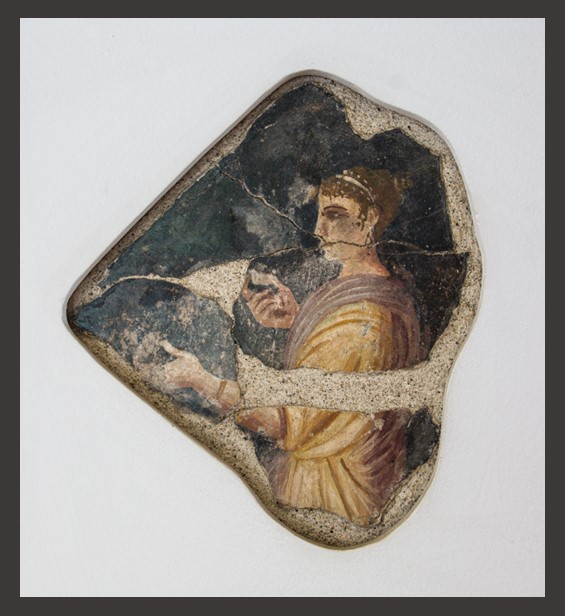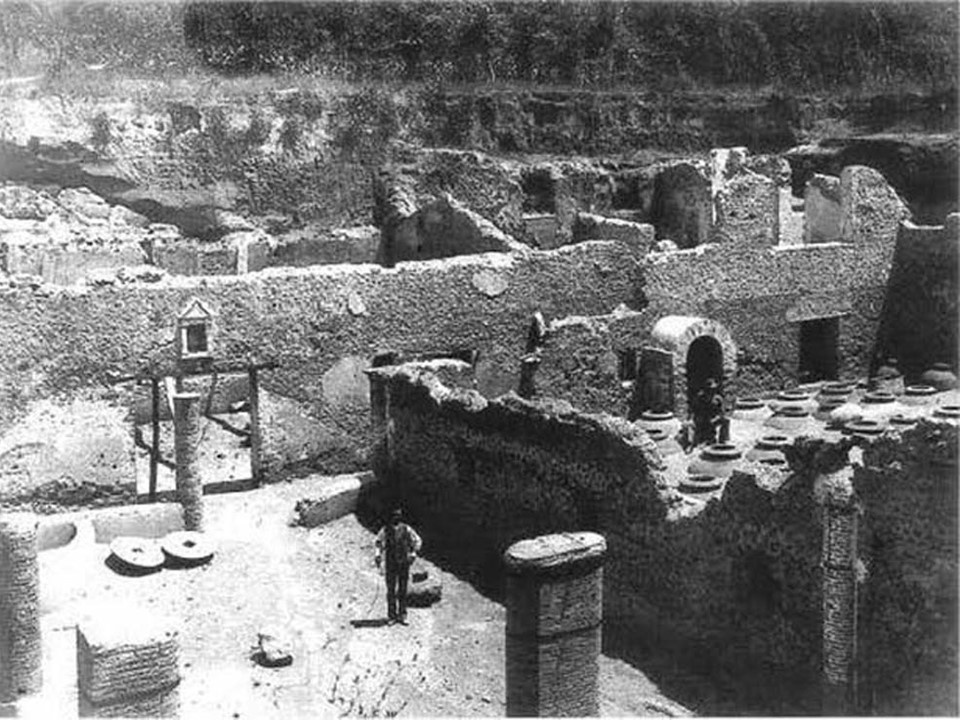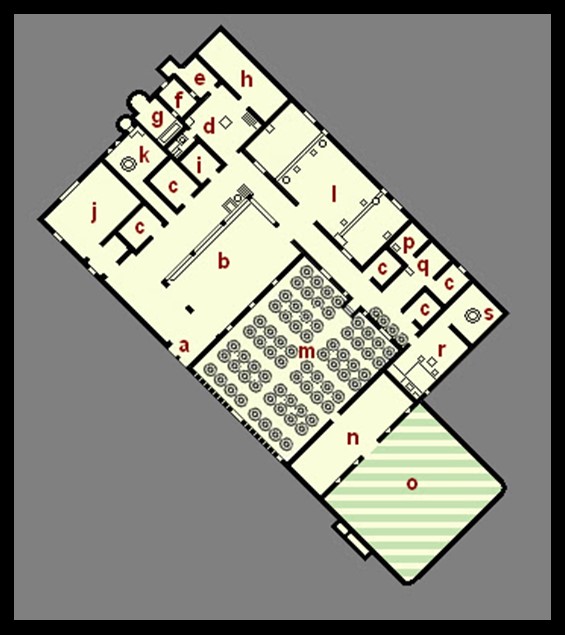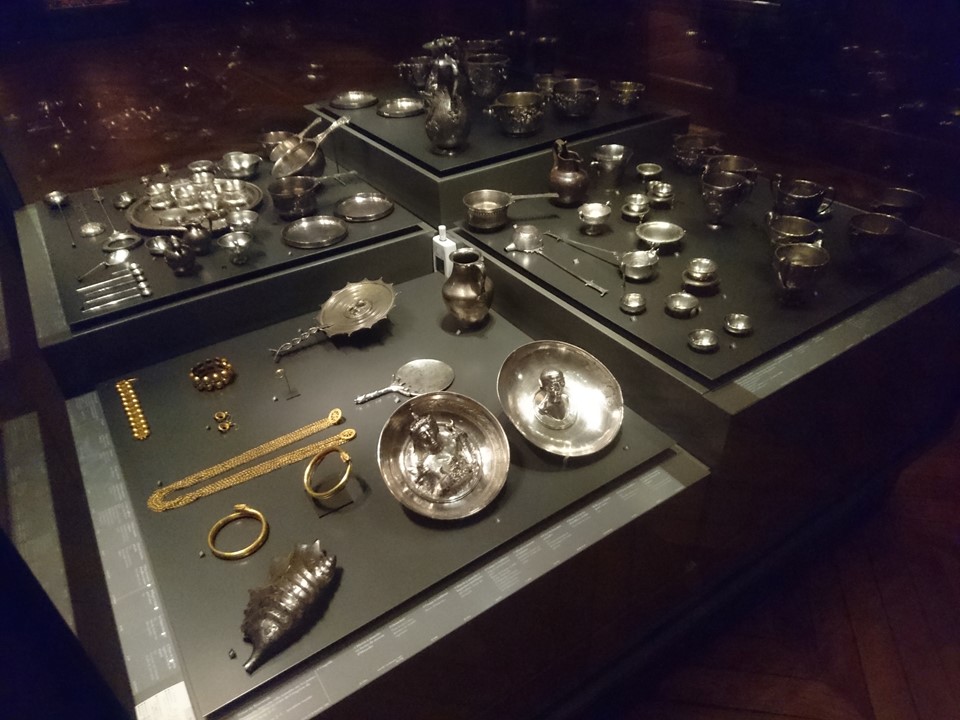
Boscoreale, write the Metropolitan Museum experts, an area about a mile north of Pompeii, was notable in antiquity for having numerous aristocratic country villas. This tradition endured into the time of the Bourbon kings, as is attested by the region’s name, the “Royal Forest,” which implies that Boscoreale was a hunting preserve. Some of the most important Roman “treasures” surviving from antiquity come from Roman Villas at Boscoreale built shortly after the middle of the first century BC. Villa Pisanella in Boscoreale was buried by the eruption of Vesuvius in 79 AD, but in 1868 excavations by Modestino Pulzella brought it back to a “second” life. During the 1895 excavation period, archaeologists came across a large quantity of gold coins, a few pieces of jewellery and an exceptional collection of silverware afterwards presented to the Louvre by Count Edmond de Rothschild. https://www.metmuseum.org/toah/hd/cubi/hd_cubi.htm and https://sites.google.com/site/ad79eruption/boscoreale/villa-pisanella

https://www.pompeiiinpictures.com/pompeiiinpictures/VF/Villa_013%20Boscoreale%20Villa%20della%20Pisanella%20p1.htm
Villa Pisanella has been the subject of excavations, or rather of explorations, which date back to the last century, and were essentially aimed at the recovery of “treasures,” now dispersed in various museums, and at the preparation of building archaeological plans. During the 1894 and 1903 seasons, the famous Boscoreale Treasure of gold coins, jewellery, and silver tableware was unearthed, along with many bronze furnishings, household utensils, and parts of the Villa’s unpretentious fresco decoration in the Fourth Pompeian Style. All finds are now dispersed among the Louvre, where the gold and silver artefacts are housed, Berlin, the Field Museum in Chicago, and the Boscoreale Antiquarium in Italy. On completion of the 1894-1903 “excavations,” the villa was reburied. http://www.perseus.tufts.edu/hopper/text?doc=Perseus:text:1999.04.0006:entry=boscoreale

The Villa’s archaeological ground plan shows a modest “Villa Rustica.” It was the headquarters of a farming estate producing olive oil, grain, and enough wine to have two presses and 84 dolia (round fermentation vessels) in its court for fermentation. The owners lived in an apartment arranged in the Villa’s upper story. On the ground floor, archaeologists discovered a single big triclinium, a bath complex, a large kitchen, and the necessary rooms/areas for the management of the farm. http://www.deprisco.it/villapisanella/pisanella.htm
The most important Rooms/Areas in Villa Pisanella are: 1. The letter marks the Entrance of the Villa near the middle of the southwest side as shown in the plan. 2. The letter b marks the Inner Court, wide enough for carts and wagons. 3. Room d is the Villa’s large Kitchen with an open hearth almost in the center of the room, on which the remains of a fire were found, and Room k is the Bakery with a single mill and an oven. 4. Rooms e, f, and g indicate the Bath House of Villa Pisanella beautifully adorned with black and white, simple but elegant, floor mosaics. In the narrow area between Room g and Room i, opening to the Kitchen, archaeologists discovered the Villa’s Boiler Room with a lead-heated water reservoir standing on a masonry foundation. 5. Room i, is the Villa’s main Tool Room. 6. Room J marks the Villa’s only ground-floor Triclinium in which the remains of couches with luxurious bronze trimmings were discovered. 7. The long Room l on the northeast side of the court was the Torcularium where grapes were pressed to produce wine. At each end was a large press with a raised floor. 8. Room r and Room s were dedicated to the making of olive oil containing a small oil press in Room r and an olive crusher in Room s. 9. Area m is the Cella Vinaria, the area where 84 Dolia (round fermentation vessels) were discovered sunk in the ground. Local wine was stored in the Villa’s Dolia to ferment. According to Pliny’s ‘Natural History’ in Campania the best wine underwent fermentation in the open air, exposed to sun, wind, and rain.10. Area o is the Threshing Floor of Villa Pisanella. 11. Rooms marked c, are the Villa’s Cubicula (bedrooms). https://sites.google.com/site/ad79eruption/boscoreale/villa-pisanella

https://commons.wikimedia.org/wiki/File:Tr%C3%A9sor_de_Boscoreale_%E2%80%93_Mus%C3%A9e_du_Louvre_%E2%80%93_Q178624_%E2%80%93_a.jpg
In 1895, while excavating Room l, the Villa’s Torcularium for wine, archaeologists discovered a Hoard consisting of a large quantity of aurei coins (aureus is a Roman gold coin valued at 25 pure silver denarii), a few pieces of valuable jewelry, and an exceptional collection of silverware. After the Hoard’s amazing discovery, Vincenzo de Prisco, the owner of the property where Villa Pisanella was discovered, travelled to Paris where he sold the Boscoreale Treasure, as the Villa’s Hoard was named, to Museums and wealthy collectors. Part of the treasure, 109 pieces of silverware and jewelry, was bought by Baron Rothschild, who donated it to the Louvre Museum. A POST dedicated to the Boscoreale Treasure will be the subject on another BLOG presentation.
For a PowerPoint on Villa Pisanella, please… Check HERE!